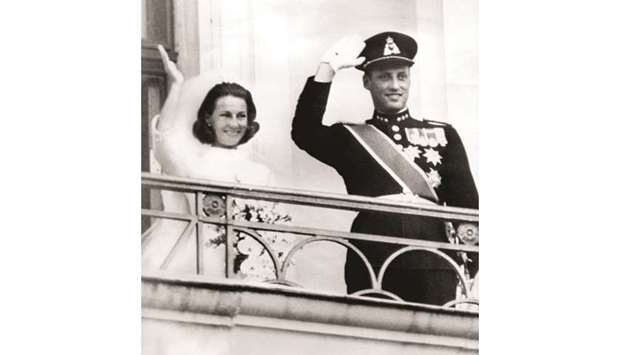Before he was king of Norway, Harald V fought for nine long years to marry the woman he loved. Sonja Haraldsen was a commoner and the couple’s relationship was a scandal at the time. But Harald wanted no one else, and in the end he married her.
The royal pair celebrated their golden wedding anniversary in 2018 - and 50 years after they tied the knot, Europe’s aristocracy looks quite different from back then. Kate and Meghan in Britain, Prince Daniel of Sweden, Queen Maxima of the Netherlands - marriages between royals and commoners have become the norm.
There are exceptions: King Philippe of Belgium and his wife Mathilde, for example. Philippe is one of the few of his generation to have married within the aristocracy. But even he broke with tradition to some extent.
“As a countess, Mathilde was not a traditional match either,” says Leontine Graefin von Schmettow, who is a royal expert and descendant of German nobility. “Truly befitting would have been a partner from another royal or princely house.”
Even in regular families, marriage has not always been closely linked with love and in blue-blooded families, even less so. When royals wedded, other things were at stake, such as maintaining power, fostering diplomatic alliances and expanding territory. But today, with monarchies no longer possessing the political influence they once did, new factors have arisen. A good education, for example, and the ability to fulfil the modern royal’s role, as well as social engagements, are all important, von Schmettow says.
Of course, there is love. But the bride or groom also needs to be discreet, diplomatic and au fait with royal protocol. “Harald knew that Sonja was a good fit for the job,” von Schmettow says.
The former crown prince and the learned daughter of a businessman met in 1959. A marriage was initially out of the question. “Harald really came up against headwinds. In the end he threatened not to take the throne,” von Schmettow explains. But his father, King Olaf V, relented and informed the government of his approval. The wedding took place in 1968, but with less pomp than a full royal wedding, and with fewer guests, as many boycotted the occasion. However, the winds of change were blowing through royal households.
In 1976, German commoner Silvia Sommerlath became queen of Sweden upon her marriage to King Carl XVI Gustaf. Carl Gustaf’s strategy for marrying her was to wait until he himself ascended the throne and approve the match himself, historian Leonhard Horowski says. Since then, Swedish royals have almost exclusively married outside the country’s nobility.
The trend of marrying for love has also changed the structure of upper-class families. While earlier match-making spanned international borders and formed marriages bound by rules and protocols, many royals are now marrying people from their home countries. “They are less international and more cut off from each other,” says Horowski, author of The Kings’ Europe.
And not everyone is happy about that. “Interestingly, it’s especially the German nobility, which has no power at all and whose status has been abolished, that has a problem with that,” von Schmettow says, adding that certain circles view developments in modern royal households with suspicion.
“For some, it is getting too close to the people,” says the observer, who is a countess - though in name only. Many aristocratic families in Germany have house laws, “and they apply still today,” Horowski says.
And even if marrying a commoner has become quite normal, there’s always some debate surrounding the favoured few. Take Maxima, for example, now queen of The Netherlands. There was some controversy surrounding her father, Argentinian politician Jorge Zorreguieta, due to his role in that country’s military dictatorship. As a result, he was not welcome at the ceremony when she married Willem-Alexander.
And before Meghan wed Harry and became the duchess of Sussex, conservative observers and right-wing tabloids kicked up a fuss over her status as a divorced, mixed-race actress. “That sheds a light on the entire history,” von Schmettow says.
In Norway, the royals still face similar murmurings decades after the marriage of Sonja and Harald. It wasn’t much of an issue that Crown Prince Haakon’s wife, Mette-Marit, had no title but the Norwegians were still pushing boundaries in accepting her. “A child born out of wedlock and a history, that was a new challenge,” von Schmettow points out. But after meeting her, the king supported his son in presenting his partner to the public, the expert says. “Of course he has to be careful that no harm comes to the monarchy but he is also a father and understands the situation very well.”
The family once again showed themselves to be a monarchy of the 21st century when celebrating the king and queen’s 50th wedding anniversary, by inviting guests to a service in Oslo Cathedral and live-streaming the event for viewers. And the guests were not only chosen by bloodline, 200 members of the public were also allowed to attend after registering by email, bringing Europe’s modern royals even closer to the people.– DPA

ROYAL PROTOCOL: There is love. But the bride or groom also needs to be discreet, diplomatic and au fait with royal protocol.
